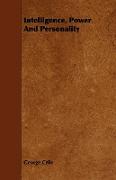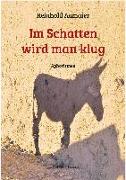Intelligence, Power and Personality
BücherAngebote / Angebote:
ONE of the mysteries of the human race is the fact that civalized man is subject to certain diseases that rarely attack primitive man and never appear in wild and domestic animals. These are various nervous and mental disorders, exophthalmic goiter, neurocirculatory asthenia, Raynauds disease, diabetes, peptic ulcer, essential hypertension, and coronary disease. Each of these diseases is related to the expenditure of energy. It would appear that this fact alone offers a biological clue to the mechanism of the energy characteristics of man and animals. It is well known that only certain organs and tissues control the expenditure of energy in all animals, including man. These are the brain, the heart and the blood, the thyroid gland, the adrenal glands, the celiac ganglia, and the sympathetic system. I postulated that if we were to analyze, measure, and compare the organs of this energy-controlling system in fish, reptiles, birds and mammals and then compare the influence of the heat of the tropics and the cold of the arctic upon the size of these organs-heat and cold and struggle and survival being the most potent of all environmental influences-we should be able to account for the varying intelligence, power, and personality among the different species of animals and the races of man. We should be able to find for man an energy formula distinct from that for wild and domestic animals and, further, an energy formula for civilized man. This became our quest, While Mrs. Crile and I were hunting in Africa in 1927, two phenomena well known to hunters of big game excited our attention. The first was that an antelope, a lion, or any high powered animal, when shot through the heart in such a way that the circulation of the blood is immediately arrested, may continue to run at top speed for a distance of a hundred or more yards before he falls dead. This fact challenged credulity, for, from my observations in war, I had found that death results instantly from a comparable shot through the heart in man. The second phenomenon was the explosive outburst of speed seen in the long leaps of the impala in escape and the incredibly high and long bound of the lion in attack. In contrast, we observed that if an animal is shot through the brain or high in the brachial plexus near the spinal column, it will never move again if shot through the heart, it may run a hundred yards or more and even complete its attack if shot so that the energy of the bullet suspends momentarily the action of the brain or creases the animal, the animal may fall, then jump up, and bound away or complete its charge. When a comparison was made of the effect of a shot through the brain of a zebra, a lion, or an elephant with the effect of a shot through the brain of a turtle, a crocodile, or a python, a great difference was noted. In the warm- blooded group death was instantaneous. In the cold-blooded group there was more or less muscular activity for varying periods of time, up to several hours. Why one animal behaves like a high-powered motor, set in high gear, exhausting itself by a high expenditure of energy, and another behaves like a low-powered motor, set in low gear, and therefore capable of carrying on indefinitely at a moderate expenditure of energy, has long been an enigma. This became our problem..............
Folgt in ca. 10 Arbeitstagen




